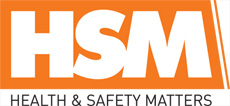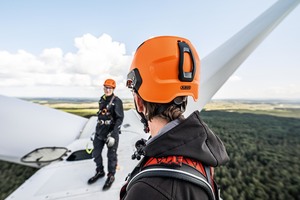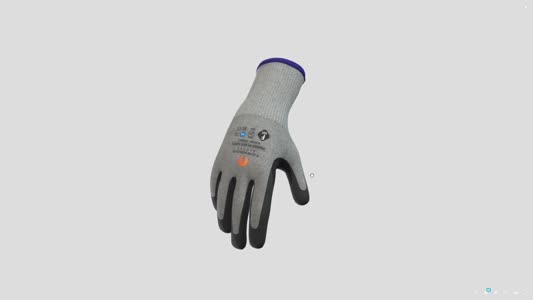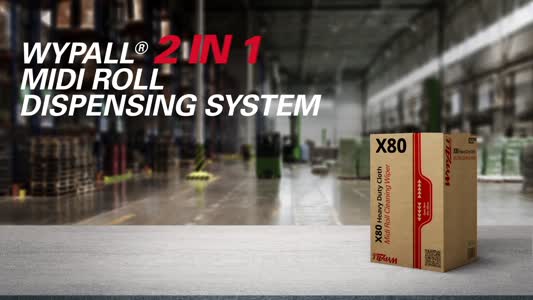
 |
Mark Sennett
Managing Editor |
 |
Kelly Rose
Editor |
| Home> | Slips, Trips & Falls | >Fall Prevention | >Making an impact |
| Home> | Slips, Trips & Falls | >Fall Protection | >Making an impact |
| Home> | PPE | >General PPE | >Making an impact |
Making an impact
14 October 2025
Falls from height and contact with moving or falling objects are two of the most frequent causes of serious injury and death in UK workplaces. Adam Evans explores how a strong safety culture where trusted PPE and shared responsibility are embraced across all levels of a business can make a greater impact.

IN 2023/24, 50 worker fatalities were recorded due to falls and 20 resulting from contact with moving objects. Of the 61,663 reported non-fatal injuries, around eight percent, or 4,900 cases, were attributed to falls, and ten percent, or about 6,100, involved workers being struck by moving or falling objects.
These figures show where progress is still needed, but they also highlight how far the industry has come. Safer equipment, clearer regulations and better training have created strong foundations.
What makes the greatest difference is how these measures are understood and supported across every level of a business. The most successful safety outcomes come from workplaces where PPE is worn because it is trusted to fit well, perform reliably and represent a shared culture of care.
The relationship between PPE and culture
PPE today sits at the point where technical control meets human judgement. It can only perform as intended when it is selected correctly, fits properly and is worn consistently.
In a UK survey of workers required to wear head protection, 26 percent said they avoided helmets because they were uncomfortable. Eighteen percent felt the equipment interfered with their work, ten percent cited overheating and six percent reported poor fit. These figures reveal how decisions about PPE are influenced by perception and experience alongside policy.
When a worker removes a helmet or loosens a harness, the act is rarely about defiance. It is often a response to discomfort, poor compatibility with other tools or inadequate understanding of why the item is required.
These decisions are shaped by workplace culture. An organisation that invests time in explaining the reasoning behind PPE choices, that involves its teams in testing and selection, and that ensures equipment genuinely supports the work being done, tends to achieve higher levels of compliance without coercion.
And a culture that treats PPE as an integral part of the job, produces more reliable outcomes where it is seen as a visible indicator of safety culture and offered protection. Well-maintained, well-fitted equipment tells workers that their protection is valued and is likely to have positive outcomes for stress, and mental health risk assessments.
Matching protection to the task
Accurate specification is central to any PPE programme. Each standard exists to address a defined risk, and understanding these distinctions is essential. Industrial helmets certified to EN 397 are designed to protect against vertical impacts and limited lateral deformation, making them appropriate for construction, warehousing and manufacturing.
For work at height, EN 12492 climbing helmets provide multi-directional impact protection and use secure chinstraps that remain fastened in the event of a fall. Electrical work requires EN 50365 insulating helmets, which provide protection up to 1,000 volts AC and 1,500 volts DC.
Using equipment outside its intended scope can lead to a false sense of security. A helmet or glove that meets a general standard may still fail if the actual risk differs from the test conditions.
Cut-resistant gloves must align with the correct cut level defined in EN 388. Hearing protection should be selected using measured site noise data, not estimates. Respiratory protection must match the particle type, size and concentration present in the environment.
These examples demonstrate how employers are responsible for ensuring that PPE is appropriate, available and accompanied by training on correct use and maintenance. Workers need to understand the limits of their equipment and how to inspect it for damage or deterioration. When both responsibilities are shared, the likelihood of protection failing in use is greatly reduced.
Comfort, compatibility and maintenance
Discomfort remains one of the main reasons workers remove or modify PPE. Weight, ventilation, visibility and mobility all influence whether equipment is worn as intended.
Latest design developments have reduced these barriers through lighter materials, adjustable suspension systems and improved internal padding. Ventilation channels help manage heat build-up, while moisture-wicking liners increase comfort during long shifts. These are not luxuries; they are key factors in ensuring consistent use.
Compatible PPE supports a combination of components worn together. If items interfere with one another, overall protection is compromised even when each component meets its individual standard. A visor that breaks the seal of a respirator or earmuffs that affect helmet stability are common examples. Considering how equipment interacts as a system is therefore as important as assessing each element individually.
Maintenance determines how long protection remains effective. Materials can degrade through ultraviolet exposure, temperature extremes or chemical contact. Helmets should be stored correctly and replaced according to manufacturer guidance, while gloves, harnesses and respirators require regular inspection and timely replacement.
Embedding these checks into routine operations for employers and employees supports a unit of ownership and ensures that PPE continues to perform as designed.
Responding to a changing risk landscape
Renewable energy projects often involve work at significant height and in offshore environments. Urban construction sites are becoming denser, with multiple trades operating simultaneously in confined areas. Climate change is introducing new pressures, including temperature extremes, heavy rainfall and stronger winds. These developments have prompted manufacturers to adapt.
Advances in materials science have produced lighter but more durable shells, improved impact-absorbing liners and modular attachment systems that allow accessories to be fitted without compromising certification.
Some products now include sensors that record impact data or indicate usage time. While these innovations enhance performance and traceability, they cannot substitute for understanding, correct selection or consistent maintenance. Such technology is designed to complement culture and not replace it.
Inclusion and the meaning of fit
The Chartered Institute of Building’s #PPEthatfits campaign was designed to highlight inequalities in the provision of protective equipment, particularly for women. Ill-fitting PPE is less effective and can even introduce new risks by restricting movement or reducing visibility.
By addressing these disparities that go beyond compliance, it demonstrates how an organisation values the safety and dignity of every individual on site, embracing an inclusive and diverse workplace.
And when people can see their concerns about fit and comfort are acknowledged and acted upon, they are more likely to wear equipment consistently and to report issues promptly. Fit is therefore both a technical requirement and a cultural statement.
Building confidence through leadership
It is said that without trust in business, nothing else matters. When it comes to PPE and working from height, the necessity of trust is in the equipment, in the process of selection and in the people managing safety.
When managers follow the same rules, wear the same equipment and are seen to act on feedback, they reinforce the message that safety is collective rather than imposed.
Training also plays a decisive role. Workers who understand how and why PPE standards apply to their role are more likely to use equipment correctly and less likely to make unsafe modifications. Refresher sessions that include practical demonstrations of inspection and maintenance help maintain engagement long after initial induction.
ABUS and industry collaboration
ABUS UK supports the precision and reliability that define security engineering to the development of protective equipment. It is for this reason we ensure industrial and climbing helmets are built to meet the relevant European standards while addressing the day-to-day realities of construction, maintenance and utility work. Design decisions focus on comfort, durability and ease of integration with other PPE systems.
It is also a duty of care and responsibility to work closely with safety professionals and end users to understand how equipment performs in real environments and how training and maintenance processes can be improved. By operating a broader culture of awareness, trust and engagement, the aim is to contribute to an industry where PPE is supplied, and a culture of understanding and ownership is embraced.
Building and maintaining that trust is the measure of success for any safety programme. When workers understand their protection, believe in its effectiveness and see that it reflects their needs, the gap between policy and practice begins to close.
Adam Evans is managing director at ABUS UK. For more information, visit www.abus.com/uk
























